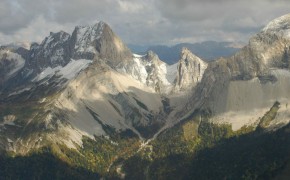Inversion Tectonics in the French Alps
The petroleum potential of tectonically complex areas relates directly to the compatibility between the timing of the deformation (age of the traps), the burial history of the source rocks, the age of expulsion and migration of the hydrocarbons, and the availability of migration pathways between source areas (kitchen) and potential traps (Roure et al., 1994).
Usually extensional structures relate to early rifting episodes and thus predate the compressive deformation episodes. The maximum burial of the source rocks can be reached during either the syn-rift tectonic subsidence or the post-rift subsidence of the margin, from the overthrusting of allochthonous tectonic units (tectonic overburial; Roure et al., 1994).
The objective of this field course in the Western Alps is to analyse:
- the complexity of the successive Jurassic, Eraly Cretaceous and Oligocene-basal Miocene extensional episodes that affected the basin
- the chronology of the successive Pyrenean (Late Cretaceous to Eocene) or Alpine (Late Miocene to Pliocene) compressional episodes
- the local inversion of early extensional structures (basement fault reactivation) and the formation of new thin-skinned structures (detachment of the sedimentary cover) during either Pyrenean and/or Alpine deformations


